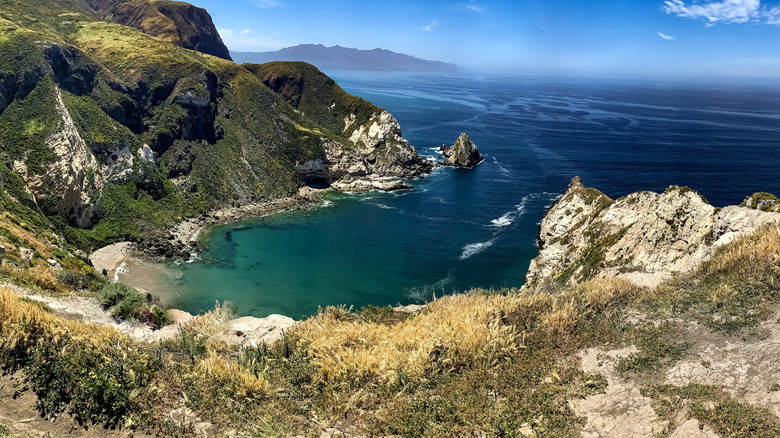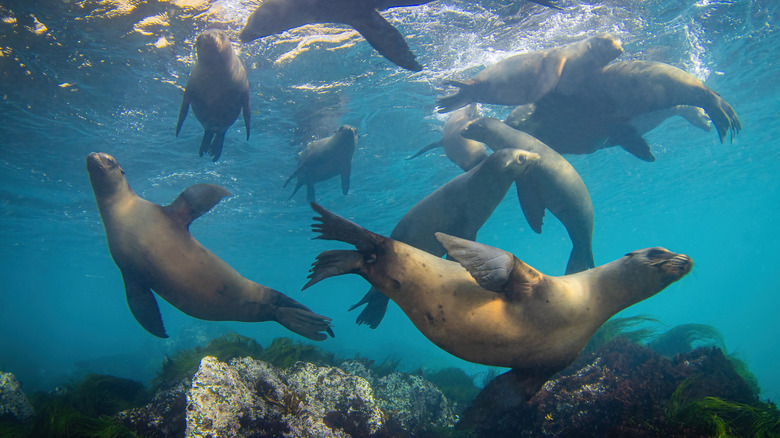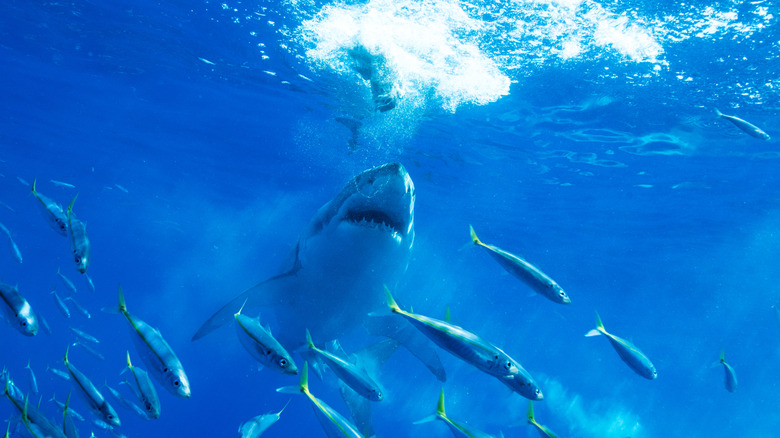Dangerous Wildlife To Look Out For When Visiting Channel Islands National Park
We may receive a commission on purchases made from links.
The eight islands that make up the Channel Islands off the California coast are often referred to as the "Galapagos of North America" due to their isolation as well as the diversity of plant and animal life found there. Five of these islands form the popular marine national park which is named after this famous island channel chain. While a visit here is a great an opportunity to view some unique creatures in their natural habitat, there is also dangerous wildlife to look out for when both on land and in the sea.
Hiking and nature-watching are very popular activities for visitors to Channel Islands National Park. However, there are a few hazards to be aware of before hitting the trail on these islands. Beyond the rugged terrain and steep drops, hikers need to watch out for a number of plants and animals. Poison oak and cholla cactus, sometimes known as jumping cactus, are prevalent here, as are stinging insects such as scorpions and yellowjackets.
While the larger mammals on the island, such as the island fox and spotted skunk, pose relatively little threat to humans, one of the smaller mammals is capable of inflicting significant harm. Deer mice carry and are capable of spreading the deadly hantavirus. So, it is important to properly store food, keep tents zipped, and avoid contact with these rodents. Hikers also need to be aware of ticks, which can carry disease as well. However, while there are a handful of threats posed by plants and animals on land, there are many more creatures to beware of in California waters than there are on the islands themselves.
Marine mammals may cause harm at Channel Islands National Park
The waters of the Pacific Ocean which surround Channel Islands National Park are home to a variety of marine mammals, including whales, dolphins, seals, and sea lions. Many visitors relish the opportunity to see these creatures and whale watching is one of the more popular activities in the park. However, encounters with any of these animals can be hazardous to humans.
While whales and dolphins spend the entirety of their existence in the water, both seals and sea lions spend a significant amount of time on dry land. Typically in this area, they are on offshore rocks, but will be spotted on the park's beaches occasionally. If you ever come across one of the half dozen species of seals and sea lions living in the park hanging out on the beach, do not approach it. Stay a safe distance away and allow it to have its beach time in peace. Besides the fact these are powerful animals with sharp teeth and/or tusks, they are protected under the Marine Mammal Protection Act.
In the water, it is not uncommon for snorkelers, divers, kayakers, and boaters to encounter seals and sea lions. In fact, it is almost expected. Although these animals seem playful, and in many ways, they are, you should refrain from interacting with them. Under no circumstance should you try to feed or touch them. The same goes for encounters with whales and dolphins. Whether in the water or in a kayak or small boat, these mammals should be given plenty of space if spotted, as they can inadvertently wreak havoc with their powerful tails and bodies. Kayakers and boaters in particular should keep an eye out for signs of whales. If a spout, breach, or bubble trail is spotted, stay back and do not approach.
Several dangerous sea creatures are found near the Channel Islands
It's not just marine mammals that are cause for concern at the Channel Islands. These waters are filled with a variety of potentially dangerous marine life. There are also creatures to look out for when exploring the shorelines. Sea urchins are common along the rocky shores and rocky bottom areas up to 100 feet deep. Be careful not to come in contact with them while entering or exiting the water, as spines can break off in the skin causing serious infection. Several types of jellyfish are also found here. Many can inflict painful stings. Given these islands are so remote, you should know what to do if stung by a jellyfish and carry Bactine Max Sting Relief in your emergency pack.
Rays and sharks are also found in this marine preserve. Bat rays, which have a venomous barb near the base of their tail, and Pacific electric rays are the two most common. Each of these should be given plenty of space if spotted. Electric rays are capable of delivering a 45 volt electric shock, strong enough to be dangerous, but do not intentionally zap people. Bat rays can also inflict harm with their venom-filled barb, but shuffling your feet while moving through the water is typically enough to avoid encounters.
There are over a dozen shark species found here as well, ranging from the massive basking shark to the tiny horn shark. However, only a few of them are considered dangerous types of sharks, including the mako, blue, and, of course, great white. Attacks are rare here; the most recent by the 2019 assault on a surfer. That said, it is still advisable to always swim, snorkel, or dive with a buddy and avoid being in the water during lowlight periods or in turbulent conditions.


